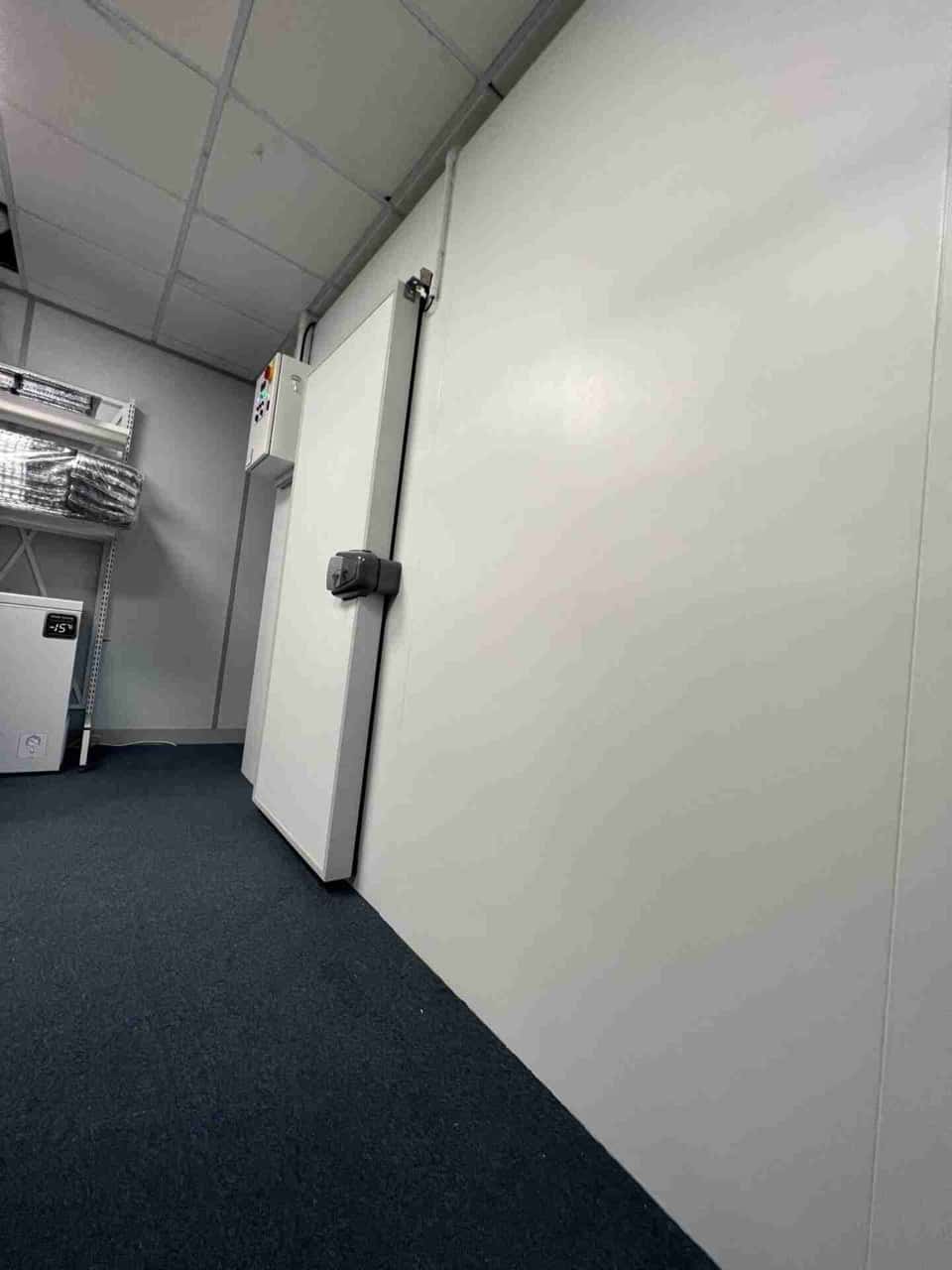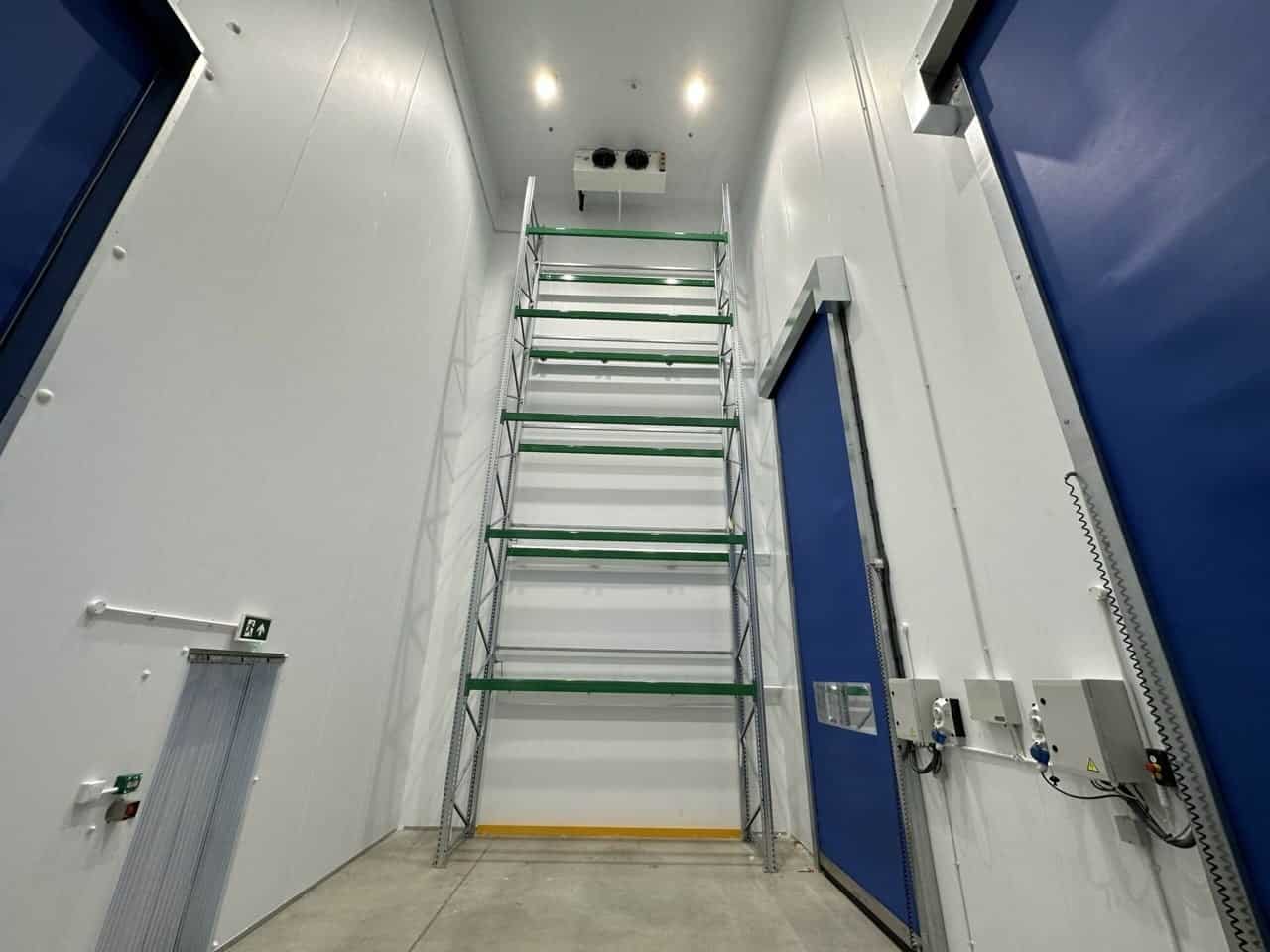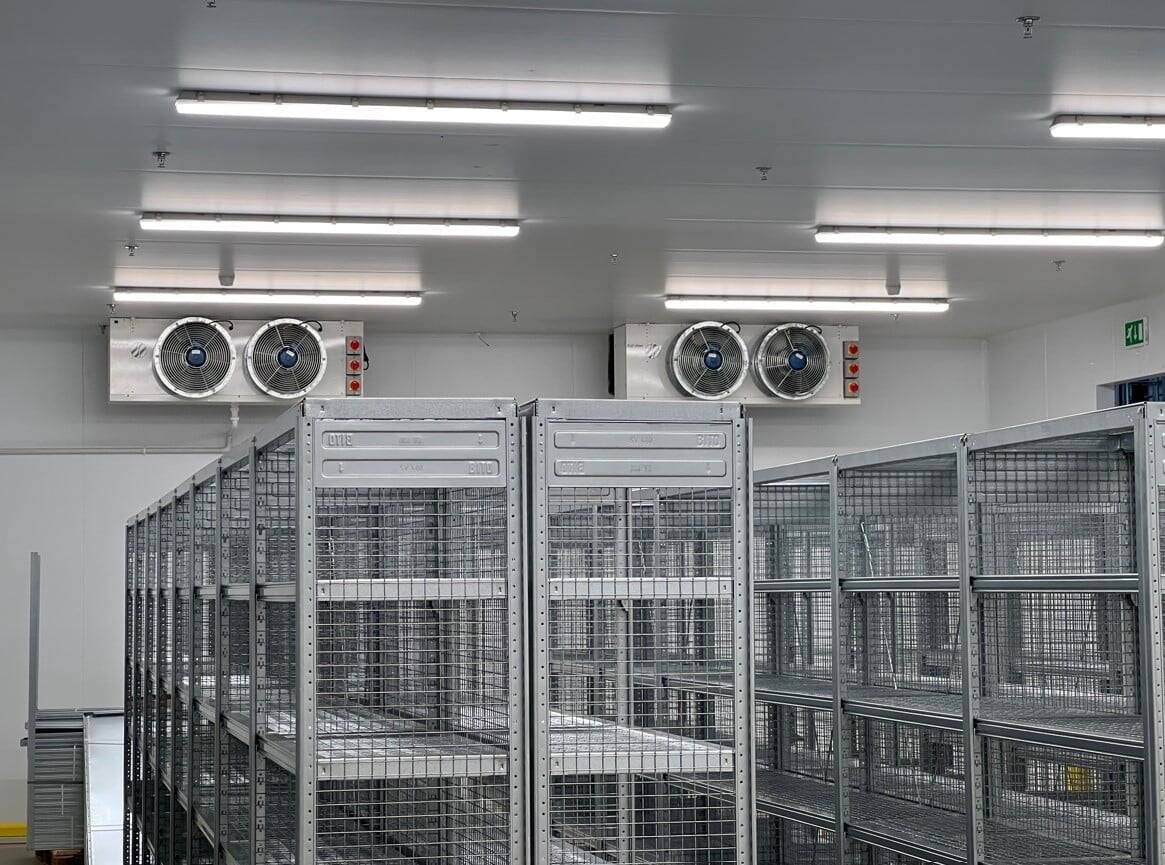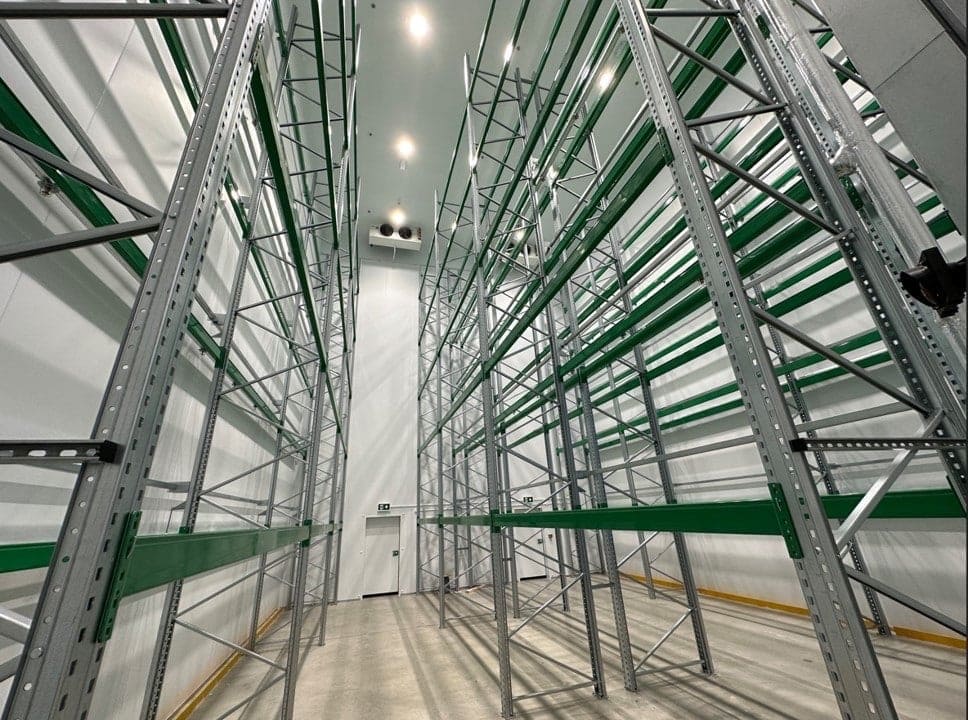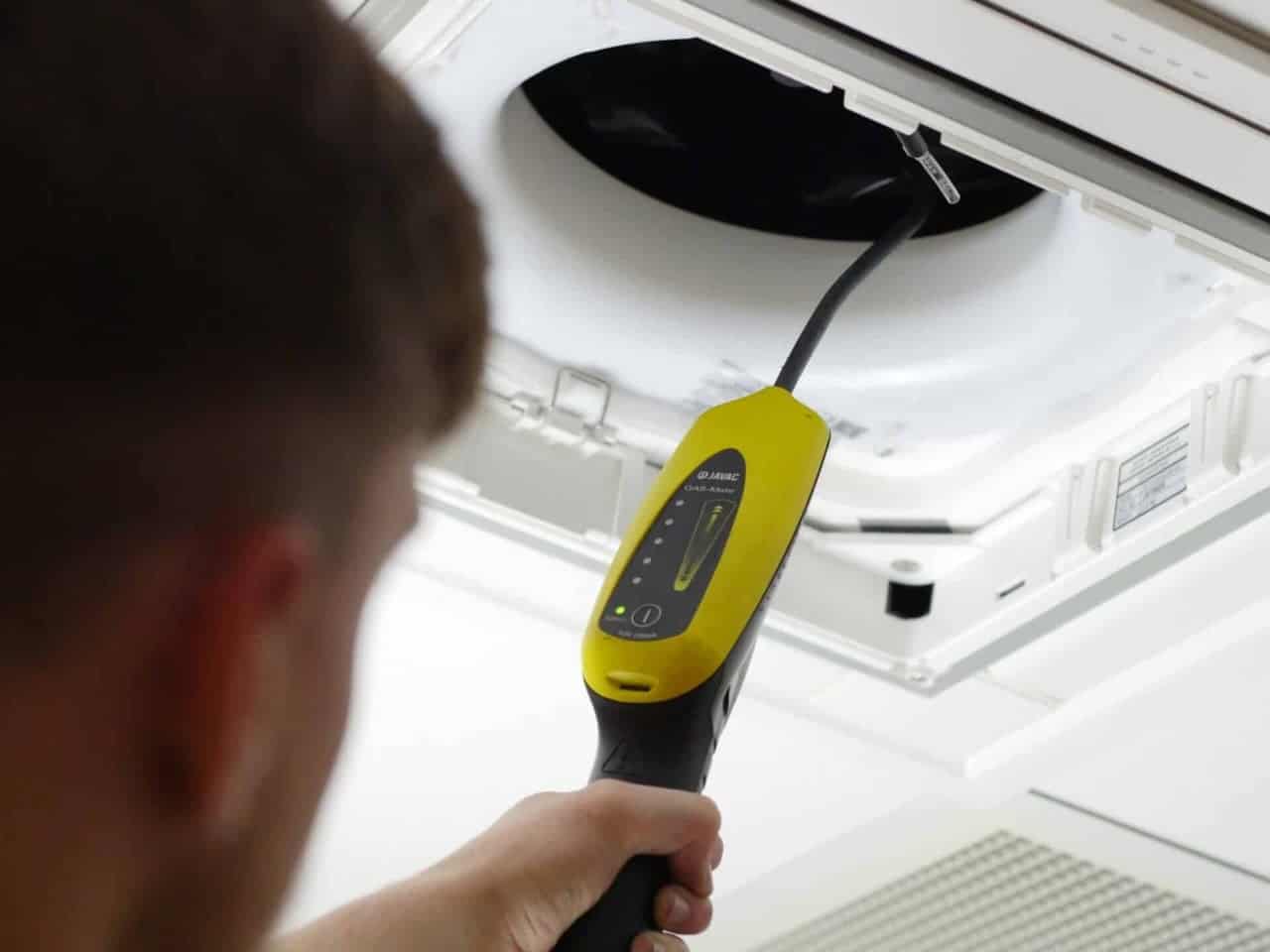Organisations that need to protect the integrity of their stock, or vital assets, will often require the use of a cold room. Installed widely across a range of industries, such as food storage, scientific research, and pharmaceuticals, cold rooms provide precise temperature control, ensuring optimal conditions for preserving perishable goods. These high levels of precision help to extend the shelf life of products, maintaining their quality over time and reducing waste. Cold rooms are also highly versatile, allowing for customisation to accommodate specific storage requirements. This adaptability means they are suitable for diverse applications. If you’re wondering how to install cold room facilities at your premises, then there are many factors to consider. Working with a professional, experienced cold room installation company, such as ICE Ltd, can ensure that your cold room is designed and installed to the highest standards and fully meets your specific requirements.
What is cold room installation?
Cold room installation is the process through which a specialised refrigerated enclosure is constructed and set up at commercial premises. Cold rooms are designed to maintain specific low temperatures for storing perishable goods, pharmaceuticals, and other temperature-sensitive products. Typically, cold rooms are built with insulated walls, floors, and ceilings, helping to prevent heat exchange with the external environment. In other words, when the temperature outside fluctuates, the temperature within the cold room will be consistent. The installation process will begin with designing the layout to match the requirements of the users, as well as the limitations of the building where it is being installed. The appropriate refrigeration systems will be selected, along with insulation materials, and the temperature control mechanisms.
Cold room construction will begin with assessing the specific storage requirements of the intended products. Factors such as the required temperature range, humidity levels, and overall storage capacity will all need to be taken into account. Once the design process has been completed, construction will usually begin with the installation of the insulated panels that form the walls, floors, and ceilings of the cold room. The panels are typically constructed using materials with high thermal resistance to minimise heat transfer and maintain stable internal temperatures.
Once the insulated panels are in place, the refrigeration system which is responsible for cooling the interior of the cold room will be set up. The choice of refrigeration system will depend on a range of factors, such as the size of the cold room, ambient temperature conditions, and energy efficiency requirements. Types of refrigeration systems that are commonly used in cold rooms include chilled water systems, glycol systems, and direct expansion (DX) systems. These use compressors, condensers, evaporators, and refrigerant fluids to extract heat from the interior of the cold room and then disperse it into the external environment.
To ensure optimal storage other components are installed, such as temperature and humidity control devices, air circulation fans, and lighting fixtures. Temperature and humidity controls regulate the internal climate, while air circulation fans ensure that cold air is evenly distributed throughout the storage space. This eliminates potential warmer spots in the cold room that could impact the integrity of the products being stored.
Appropriate lighting fixtures provide the necessary illumination for visibility and facilitate safe and efficient operations inside the cold room.
Before the cold room can be used, it will undergo testing and commissioning to ensure that it meets the required performance standards. Typically, this will include verifying temperature stability, humidity control, and the overall energy efficiency of the refrigeration system. Some essential adjustments and additional fine-tuning may need to be made during this phase to optimise the performance of the cold room.
Cold room installation is a complex process requiring high levels of expertise, from initial measurements, through design, to the physical installation of the cold room in a particular premises. A professional installer will take time to learn more about your precise requirements and ensure that you have all the necessary components to achieve the desired results.
How much does it cost to use cold storage?
The overall cost of installing a cold room at a premises will depend on various factors. These will typically include the size of the cold room required, insulation type, refrigeration system, location, control systems, and any additional features that may be required to complete the installation. The initial investment for installing a cold room can range from several thousand pounds to considerably more in the case of large, industrial-scale storage and logistics operations. These might include supermarket distribution centres. For most companies looking at how to install a cold room, the prices can differ.
Small-scale cold rooms that are suitable for restaurants or similar small businesses may cost in the region of £8,000 to £40,000 for design and installation.
Medium-sized cold storage facilities may range from £40,000 to £160,000.
Large-scale cold storage facilities, such as warehouses, designed for industrial purposes or large-scale distribution will usually require significant investments running into the hundreds of thousands.
Your installation team will be able to provide a comprehensive quote for installing a cold room on your premises based on your unique requirements. Take a look here at our recent case study where we installed a chill store for a pharmaceutical and health supplier
How much does it cost to set up a cold room?
As well as the overall cost of installation, setting up a cold room will also incur a variety of other expenses. These expenses will include the electrical running costs, the costs of ongoing servicing and maintenance, as well as the cost of any essential repairs or occasional upgrades. Installation costs will primarily depend on a number of factors, such as the size of the cold room, insulation materials, the refrigeration system required, as well as any additional features that are needed to ensure it meets your particular requirements. On average, cold room installation can cost between £150 to £400 per square metre. This would mean that a 30 square metre cold room would cost between £4,500 and £12,000 for installation. As well as initial installation costs, businesses should consider the ongoing operating costs associated with running a cold room. The most significant of these will be electricity costs for running refrigeration units.
The electricity consumption of a cold room will depend on factors such as the efficiency of the refrigeration system, insulation quality, ambient temperature, and usage patterns. On average, monthly electricity costs for running a cold room can range from £250 to £1,000, and sometimes more. The overall figure will depend on its size and usage intensity. To get the best out of your cold room and to reduce the risk of unscheduled downtime, regular maintenance is essential.
Businesses should budget for regular maintenance, as well as occasional repairs to ensure the optimal performance of the cold room over time. Maintenance tasks might include cleaning the evaporator coils, checking refrigerant levels, calibrating temperature controls, and inspecting the insulation. Your installation team should be able to advise on the regularity of maintenance that will be required, but it will usually be impacted by considerations such as environmental conditions and how the cold room is being used. On average, businesses may expect to spend between £800 to £4,000 annually on maintenance and repair expenses for a typical cold room. While there may be significant upfront and operating costs for a cold room, the benefits they can deliver are considerable.
When it comes to preserving the integrity of perishable goods, maintaining overall product quality and optimising storage efficiency, the benefits outweigh the expenses. Businesses should carefully consider their specific storage requirements, budget constraints, and long-term goals when it comes to planning the installation and operation of a cold room facility. Investing in energy-efficient refrigeration systems, high-quality insulation, and ensuring proactive maintenance practices can all help to minimise costs and maximise the return on any investment in a high-quality cold room.
Are cold rooms expensive to run?
Anyone considering how to install a cold room is likely to be concerned about the ongoing running costs of their installation. Cold rooms can be indispensable for maintaining the safety, quality, and integrity of perishable goods, but they do incur running costs. The expense of running a cold room encompasses various factors, including electricity consumption, maintenance and repair. The most significant ongoing expense for any cold storage facility is electricity. Refrigeration systems consist of condensers, evaporators, and fans, all of which require power to operate. The amount of electricity consumed will depend on factors such as the efficiency of the refrigeration equipment and insulation quality.
Another factor that’s often not considered, is how often the cold room door is opened. Minimising traffic in and out of the cold room through efficient work processes can reduce overall electricity consumption. Your installation team will be able to advise about the most energy-efficient cold room installation for your premises, as well as good practices that can help ensure that bills are manageable.
One good practice that is essential when it comes to efficient cold performance is regular maintenance. This will check the performance of key components and ensure that any essential repairs or replacements are carried out. Neglecting maintenance can lead to decreased efficiency, increased energy consumption, and potential breakdowns. All of these negative outcomes can incur increased costs for business owners. Over time, occasional repairs may become inevitable. Components such as compressors, condensers, fans, and electrical controls may wear out or malfunction due to a range of factors. Issues such as power surges, mechanical failures, and general wear and tear, can lead to repairs being required. Repair costs can vary depending on the severity of the issue, the type of component involved, and whether it’s possible to repair it or if it needs replacing. Larger repairs will be more costly and may potentially require downtime. With efficient cold room use and regular maintenance, running and repair costs can be kept to a minimum, ensuring optimal storage for a wide range of perishable items in a variety of applications and settings.
Want to find out more about how to install a cold room? At ICE Ltd, we have accumulated nearly nine decades of experience when it comes to bespoke refrigeration equipment.
Our expert team can design, supply, install, and maintain your cold room, ensuring that it performs consistently.
Contact us to find out more about how to install a cold room and how it can benefit your business.

